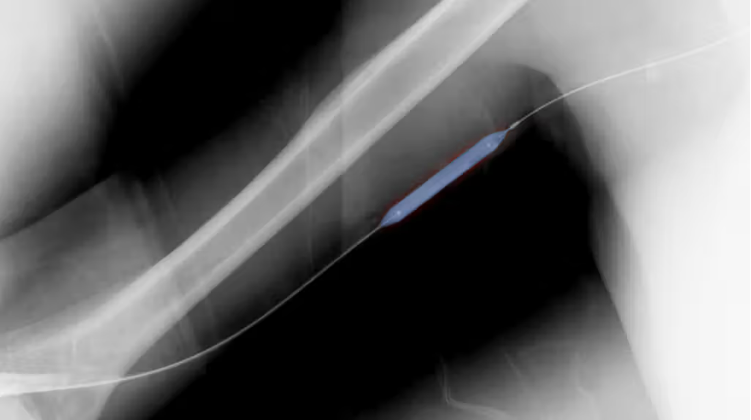
What is the balloon angioplasty procedure?
Dec 04,2024
Balloon angioplasty is a minimally invasive procedure to treat blocked or narrowed arteries. It involves inserting a tiny balloon into a blood vessel and inflating it to treat blockages and improve blood flow.
Angioplasty is one of the main treatments for coronary artery disease (CAD). People may receive the procedure to treat chest pain due to narrow or blocked coronary arteries. The coronary arteries are the main blood vessels providing blood to the heart.
Doctors use the term “angioplasty” to describe the insertion and inflation of a tiny balloon into the artery. However, doctors often insert a stent post-procedure in modern angioplasties. A stent is a small tube made from wire mesh that keeps the artery open, improving blood flow.
Read on to learn more about balloon angioplasty, including what it involves, when doctors recommend it, and more.
What does balloon angioplasty involve?

A balloon angioplasty can last anywhere from 30 minutes to several hours. The procedure does not cause much pain and takes place in a catheter lab instead of an operating theater.
Doctors may provide Trusted Source medication to relax an individual ahead of surgery.
Doctors carry out a balloon angioplasty as follows:
- The doctor threads a catheter through the affected artery with the balloon already attached. This might be throughTrusted Source the femoral artery in the thigh or the radial artery in the forearm.
- Once the catheter is in place, the doctor observes the process using a specialized X-ray machine. They pass a wire through the catheter, then pass a smaller catheter over the top of this wire with the balloon attached.
- The doctor inflates the balloon. It squashes plaque to the side of the artery wall and stretches the wall open, improving blood flow.
- In almost all cases, the doctor places a stent in the artery. The stent expands at the same time as the balloon, staying in place to keep the artery wall open.
- The doctor removes the two catheters and the balloon once the artery is open.
What conditions can balloon angioplasty treat?
Doctors typically carry out balloon angioplasties to open blocked arteriesTrusted Source due to atherosclerosis.
Atherosclerosis is the buildup of fat, cholesterol, and other substances in the arteries. Over time, too much of a waxy, fatty substance called cholesterol in the blood can form a hard plaque along the walls of these arteries, reducing blood flow to the heart.
Depending on the location of the plaque, this can lead to CAD or peripheral artery disease (PAD), as well as complications such as heart attack, heart failure, and acute limb events that may require amputation.
Coronary artery disease
CAD refers to a consistently reduced blood flow. This can make the heart muscles weak and lead to heart failure, in which the heart does not pump blood as it should.
Doctors may not recommend balloon angioplasty for some people with CAD. The coronary artery may be too small or blocked completely, so the balloon cannot move past the blockage. However, in some cases, the doctor can gradually widen the artery. If balloon angioplasty is not suitable, bypass surgery may be an option.
A person’s doctor can advise on whether they recommend angioplasty or other treatments for CAD.
Learn more about treatments for CAD.
Angina
The most commonTrusted Source CAD symptom is tightness and pain in the chest, also known as angina.
In some cases, doctors may treat chronic angina with medication, but angina due to major blockages or angina that is worsening or changing typically requires revascularization (procedure to clear clogged arteries) with angioplasty or surgery.
Other uses of balloon angioplasty
Doctors may use balloon angioplasty in other arteries in the body, such as in the legs in PAD and in the carotid arteries, where blockages increase the risk of stroke.
Doctors may also recommend balloon angioplasties for some people with blocked brain and neck arteriesTrusted Source to reduce their risk of a stroke.
What are the benefits of balloon angioplasty?
Balloon angioplasty can reduceTrusted Source severe angina, as well as help people resume physical activity limited due to angina.
The procedure can relieve symptoms of PAD and improve blood flow to the legs.
In a heart attack, balloon angioplasty is a lifesaving procedure that restores blood flow to the heart, preventing further heart damage and improving survival.
Are there any risks of balloon angioplasty?
Balloon angioplasty is a safe procedure. There may be soreness or bruising, but the procedure is relatively painless and often effective.
In rare cases, a balloon angioplasty causes severe bleeding, blood clots, or another artery blockage.
How does a person prepare for balloon angioplasty?
A person’s doctor can advise them when to last eat or drink before the procedure.
It is important for a person to discuss their medications with their doctor. They may need to stop taking some blood thinners such as warfarin. The timing of any doses of diabetes medication may also need adjusting.
A person’s doctor can provide more information about any adjustments they may need to make to their medication beforehand.
What can a person expect after balloon angioplasty?
Many people can go home on the same day as the procedure. However, some people may need to stay overnight, depending on the complexity of the procedure.
Some people may have driving and exercise restrictions after the procedure. An individual can speak with their doctor about when it is safe to drive and resume physical activity.
However, most people can resume their regular daily activities after seven days.
If a person has a stent, a doctor will prescribe blood-thinning medications to reduce their risk of blood clots and help keep the stent open. It is important to continue taking medication until a doctor advises otherwise.
Related News
Content refinement in progress.







